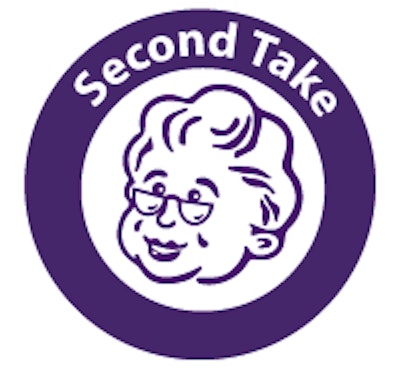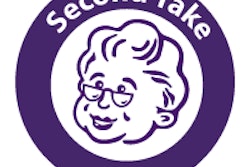
Second Take is a series of polemics edited by Drs. Saurabh Jha and Jason Itri that discusses controversial issues in medical imaging, offering both sides of an argument by deliberately taking a one-sided view. It is hoped that the audience will appreciate both the duality of the argument and the difficulty in resolving the issue. The views expressed by the authors are not necessarily the views held by them. To read the rebuttal, click here.
Forty years ago, Washington, DC, was embroiled in controversy, a war raged along the Israeli-Syrian border, and the concept of patient autonomy didn't exist. Fast forward to today -- at least the debate over patient autonomy has changed for the better.
Today, the ethical standard in medicine is to present the patient with information on the risks, benefits, and alternatives for all diagnostic and treatment options. People usually associate these interactions with surgery. Given the level of invasiveness and risk associated with surgery, the rationale for communication of risks is evident.
However, it would be a fallacy to tie the need for communication to an arbitrary threshold of risk. Because it would be just that: arbitrary. Instead, we communicate risks based on an ethical duty derived from the recognized importance of patient autonomy.
The risks associated with medical procedures are varied depending on what literature you read, which leads to many misconceptions about radiation. When radiologists do not educate patients, patients seek to educate themselves. Our patients do so by using unreliable online resources that cause both overestimation and underestimation of radiation risks.
Radiation ignorance
The U.S. public poorly understands the radiation risks associated with diagnostic radiologic examinations. According to an article by Caverly et al published earlier this year in JAMA Internal Medicine, only 37% of the patients they surveyed knew that a CT examination confers greater radiation exposure than chest radiography.
Additionally, the same study showed that patients who discuss the risks and benefits of a CT scan with their clinical providers are no more likely to report that CT is associated with greater radiation exposure. The lack of radiation education does not equate to patient apathy. Instead, when we do not educate our patients, they seek to educate themselves -- often with legitimate-appearing online resources exaggerating the risks of radiation.
Furthermore, without properly educating patients regarding the harms of radiation exposure, some patients may be eager to undergo unnecessary imaging. As stated in a Radiology article by Hendee et al published in 2010, "[patients] may have received imaging services in the past and believe they should receive them again for the same or new symptoms. Most patients incur little financial liability for imaging services and may interpret the reluctance of a physician to provide them as a withholding of procedures that they are entitled to."
Thus, it's easy to see that patients who are not properly educated about radiation contribute to overuse of CT and the associated rise in healthcare costs.
As we radiologists bill ourselves as the stewards of radiation, it is time for us to start acting like it. While altruism may motivate some, the threat to logistics and profit margin may dissuade others from following suit. However, in the age of accountable care organizations, discussing radiation risk with patients creates new opportunities for radiologists to provide value-added care.
Relative risk comparison
If the risk of radiation appears too negligible to mention, we should evaluate our own prior consenting experiences. We are all guilty of consenting theoretical risks at some point in our training.
As far as we know, MRI is safe. However, pregnant patients are consented prior to MR imaging. We presume that MRI presents no risk to the fetus, we have no data whatsoever to imply that there is risk to the fetus, yet we subject these patients to a consenting process over a theoretical risk that's not based on clinical evidence. Shouldn't the same logic apply to CT imaging -- a modality that at its essence unequivocally causes deleterious effects at higher doses? Our answer is yes.
When consenting patients, we do not include all possible risks -- rather, only those that are either likely enough to occur or have a small but real likelihood of severe consequences. For example, a standard consent for a blood product transfusion includes risks ranging from mild volume overload to fatal anaphylaxis. This is a form we have all handed to a patient at some point in our careers.
In 2011, 24 million blood components were transfused. A total of 69 deaths were reported, with only half definitely related to the transfusion itself. In other words, 24 million transfusions resulted in 35 confirmed deaths, or roughly 1.5 deaths per 1 million transfusions.
In contrast, a 0.5% risk of a radiation-induced fatal cancer translates into one death per 2,000 for those receiving a CT scan. That is, if a patient received a blood transfusion and a CT scan on the same day, he or she is 500 times more likely to die from a radiation-induced cancer than from a transfusion of a blood product. Yet they are only informed of the latter risk, which is significantly less likely; this is clearly counterintuitive.
Should the opposition acknowledge that, yes, there is a theoretical risk and, yes, there is a risk similar to other interventions that require patient consent, there's also the word "cancer." Some believe that the term unnecessarily increases patient anxiety and possibly results in patients refusing tests they should have performed. At least, that's how the argument goes.
A RadioGraphics article from 2008 tackled this very issue, recommending a proper method of disclosing radiation risks. The authors of the article proposed using a comparative model: By making a comparison with other risks, such as the likelihood of dying in a plane or car crash, patients developed a better framework for understanding the inherent risks associated with radiation.
The time to act is now
It is a necessary part of our profession to help patients understand risks, particularly when these risks are heavily covered in the media, as radiation is now, which could lead to fear mongering and the perpetuation of misinformation. It is our position that having an informed public will reduce the use of frivolous CT imaging as patients question their personal radiation risk, rather than obstructing necessary imaging or logistics.
As we enter the era of accountable care organizations, the need for radiology professionals to demonstrate value-added care is greater than ever. Radiation safety can be one means to introduce our patients to the contribution of a knowledgeable radiologist as part of their care.
Dr. Amber is a third-year radiology resident at Pennsylvania Hospital. Dr. Chen is a first-year radiology resident at the Hospital of the University of Pennsylvania.
References
Caverly TJ, Prochazka AV, Cook-Shimanek M, Pawlak M, Stickrath C. Weighing the potential harms of computed tomography: Patient survey. JAMA Intern Med. 2013;173(7):588-590.
Goodnough LT, Levy JH, Murphy MF. Concepts of blood transfusion in adults. Lancet. 2013;381(9880):1845-1854.
Verdun FR, Bochud F, Gudinchet F, et al. Radiation risk: What you should know to tell your patient. RadioGraphics. 2008;28(7):1807-1816.
The authors also wish to thank Dr. Scott Simpson for his contribution.



















